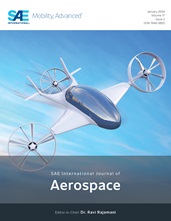Investigation of Small Scale Pulsed Detonation Engines and Feasibility Study for Implementation with Disposable Unmanned Aerial Systems
- Event
- Content
- Significant efforts have been made in the research of Pulsed Detonation Engines (PDEs) to increase the reliability and longevity of detonation based propulsion systems for use in manned aircraft. However, the efficiency, durability, and low mechanical complexity of PDEs opens up potential for use in disposable unmanned-vehicles. This paper details the steps taken for producing a miniaturized pulse detonation engine at West Virginia University (WVU) to investigate the numerically generated constraining dimensions for Deflagration to Detonation Transition (DDT) cited in this paper. Initial dimensions for the WVU PDE Demonstrator were calculated using fuel specific DDT spatial properties featured in the work of Dr. Phillip Koshy Panicker, of The University of Texas at Arlington. The WVU demonstrator was powered using oxygen and acetylene mixed in stoichiometric proportions. A low-energy spark initiates deflagration and the formation of a pressure front that propagates towards the aft end of the PDE. Capacitive discharge microphones are used to locate and measure the speed of the resulting shock wave, where supersonic wave propagation is indicative of successful transition to detonation. Additional attention was given to simple flow obstruction designs and the potential for accelerated DDT.
- Pages
- 6
- Citation
- Cain, R., Browning, P., Huebsch, W., and Wilhelm, J., "Investigation of Small Scale Pulsed Detonation Engines and Feasibility Study for Implementation with Disposable Unmanned Aerial Systems," SAE Int. J. Aerosp. 6(2):785-790, 2013, https://doi.org/10.4271/2013-01-2304.
